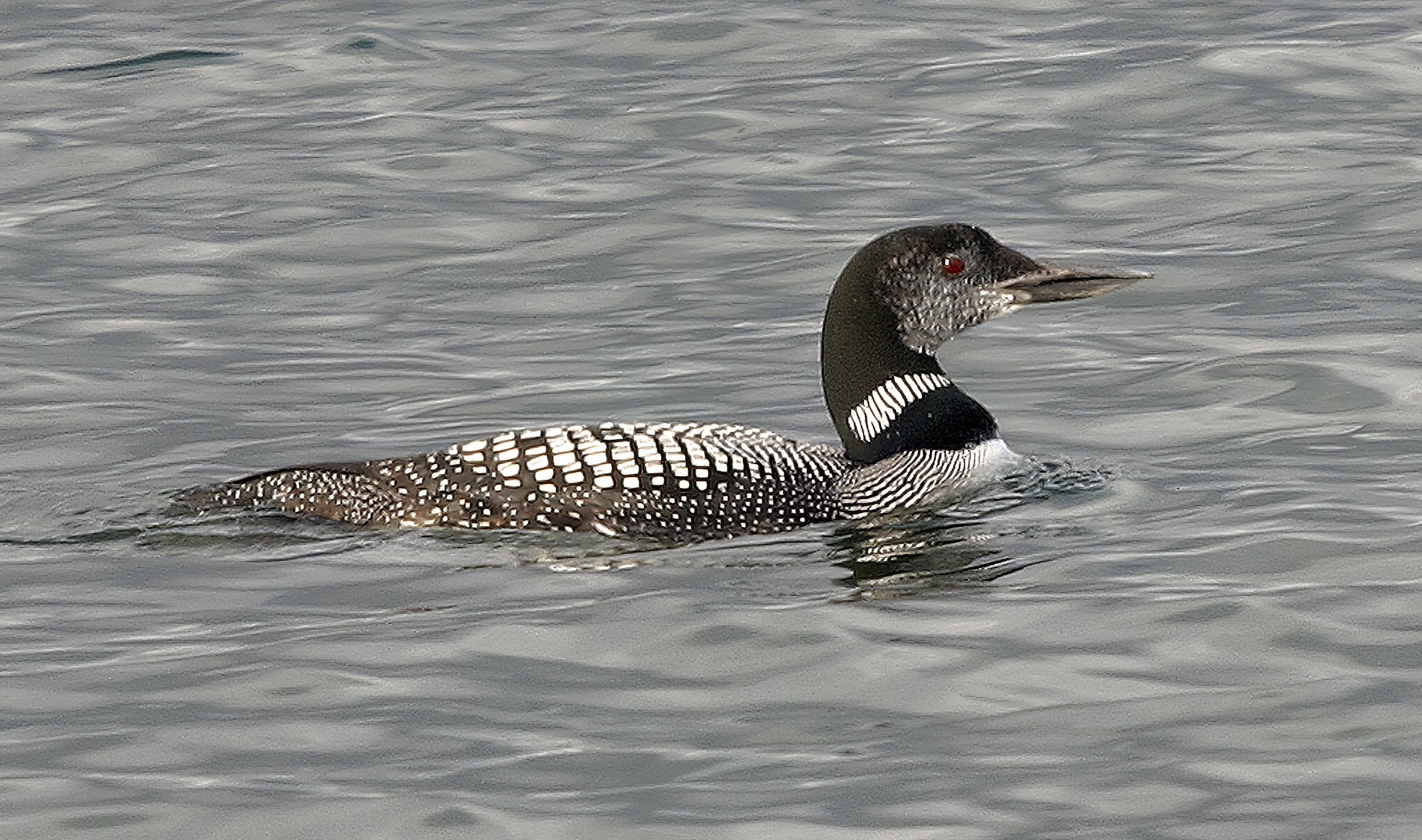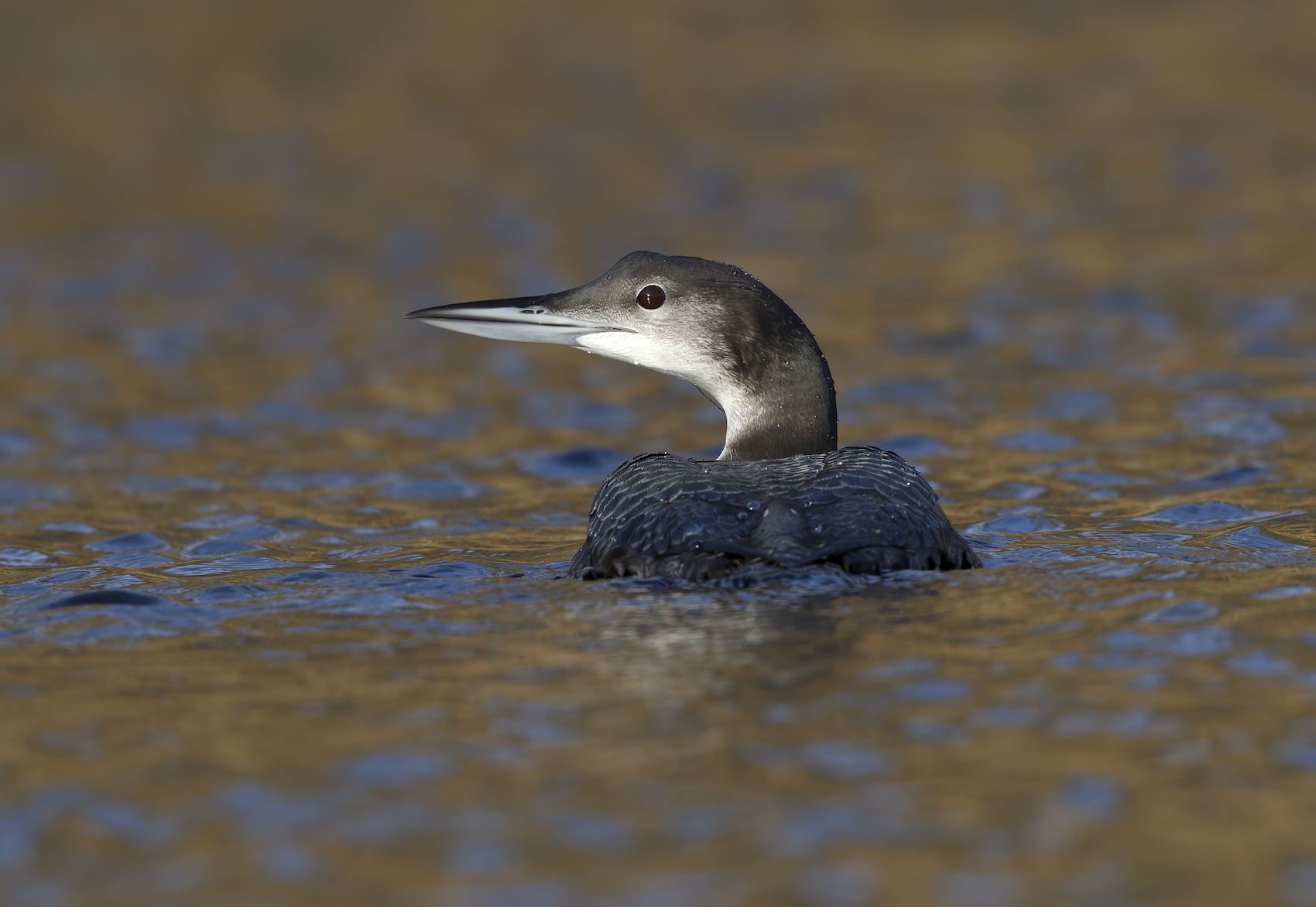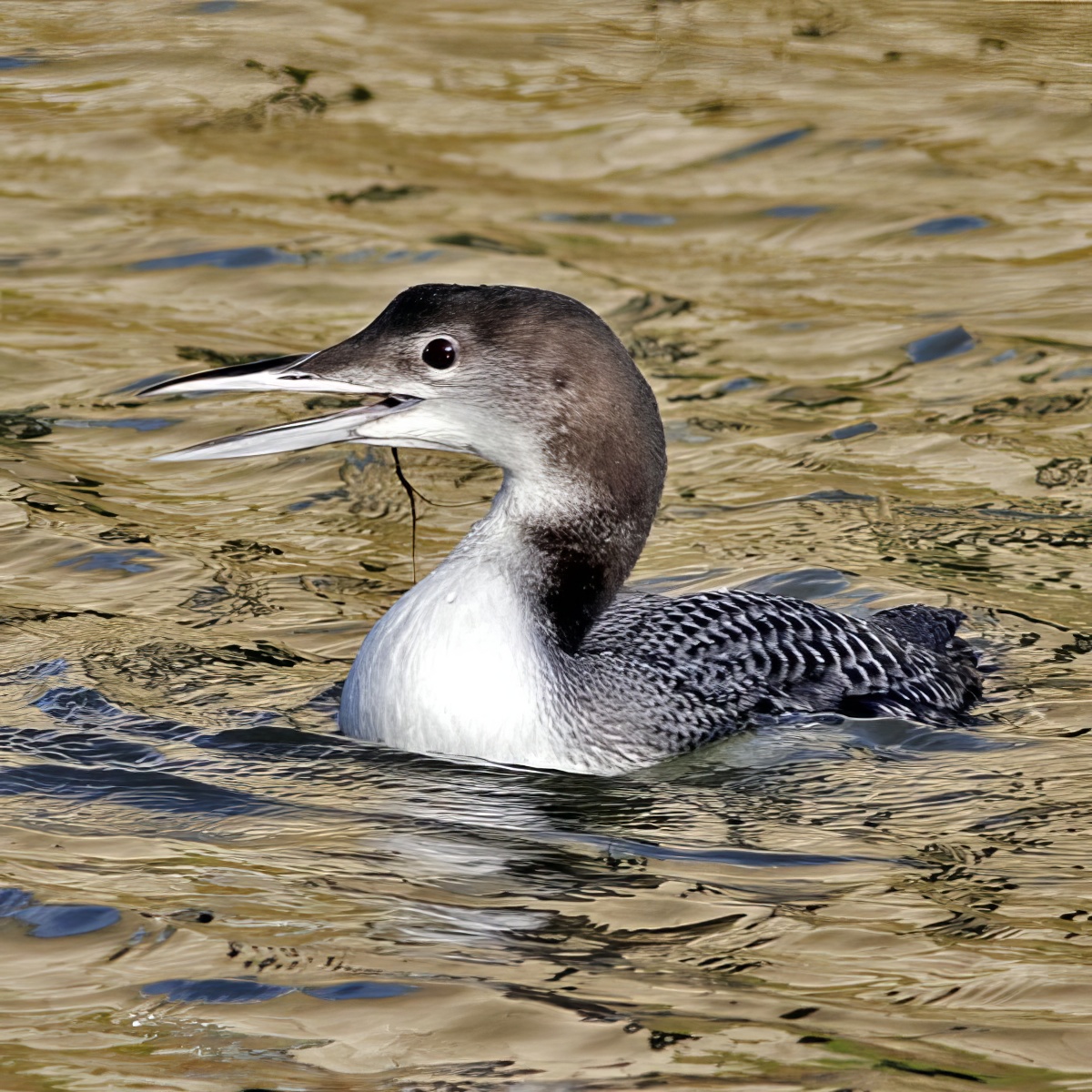Great Northern Diver Gavia immer
Scarce winter visitor August-May. Mainly coastal and exceptional in summer.



Great Northern Divers: left, moulting adult at Covenham Reservoir November 14th 2007 (Roy Harvey); centre, 1CY at Ashbyville December 2012 (Graham Catley);
right, 2CY at Bardney January 30th 2015 (Russell Hayes).
The Atlas reported that fewer than five birds per year were seen during the 1980s and 1990s. Great Northern Divers wintering around the British Isles are thought to breed in Iceland and Greenland. Their numbers show a long-term increase around the British Isles but the numbers inshore in the Greater Wash from Bridlington to Great Yarmouth remain low with WeBS data reporting a running 5-year mean to 2018-19 of around seven birds per annum in that massive area. Of course, more birds could be wintering further offshore only coming closer in on occasions. During 2014-2018 LBR reported around 28 birds a year, the same as Black-throated Diver, G. arctica. Numbers ranged from 21 in 2015 to 36 in 2016. Peak months are from October-January. The largest day counts were five at Gibraltar Point on November 4th, 2016 and three birds at each of Freiston Shore May 2nd 2016, Witham Mouth December 11th 2017 and Gibraltar Point October 27th and December 11th 2018. There were five birds on inland waters in the period with four in January and one in February.
(Account as per new Birds of Lincolnshire (2021), included September 2022)
